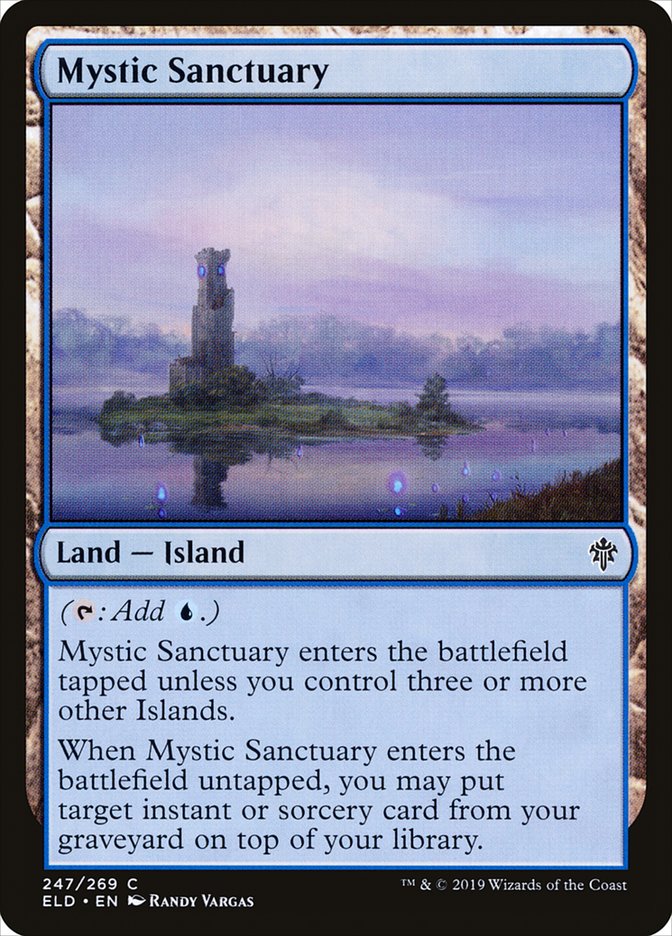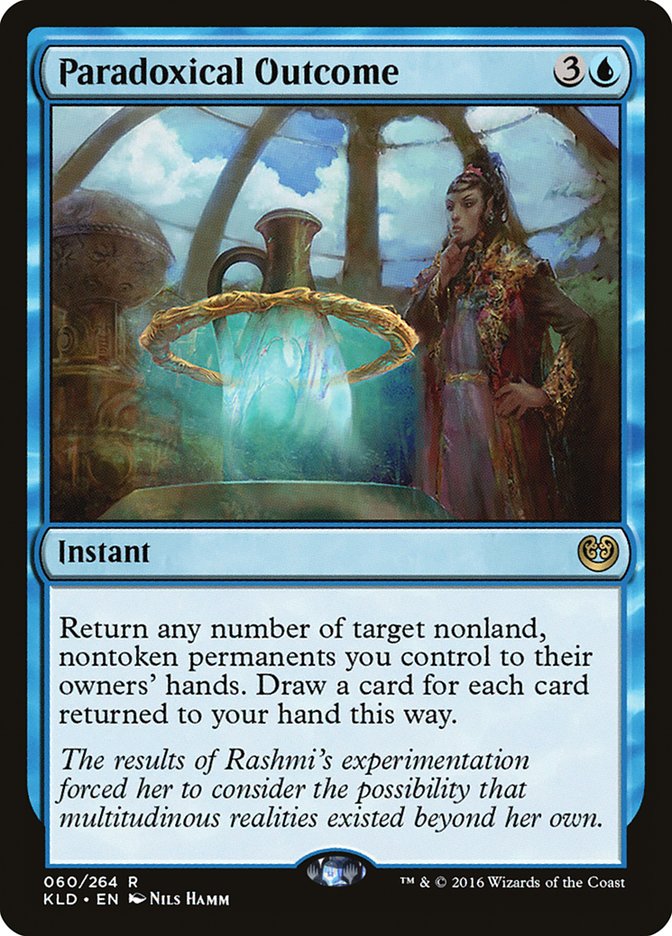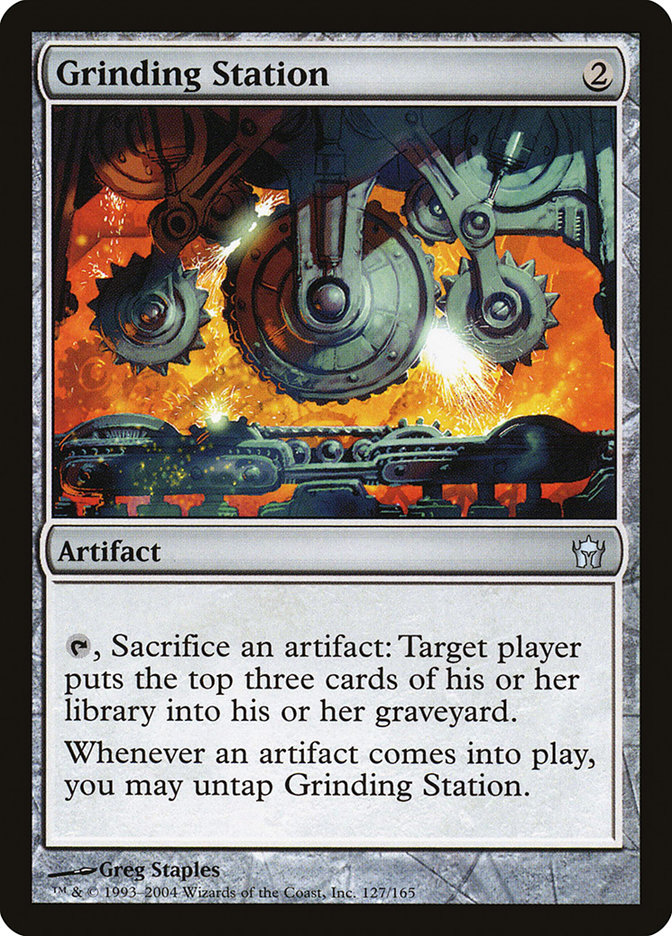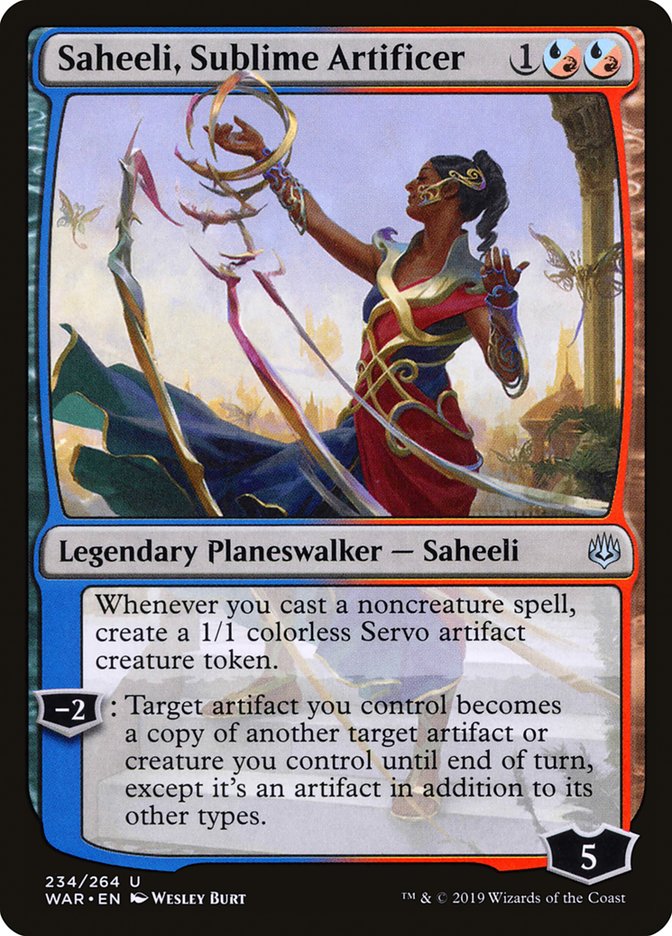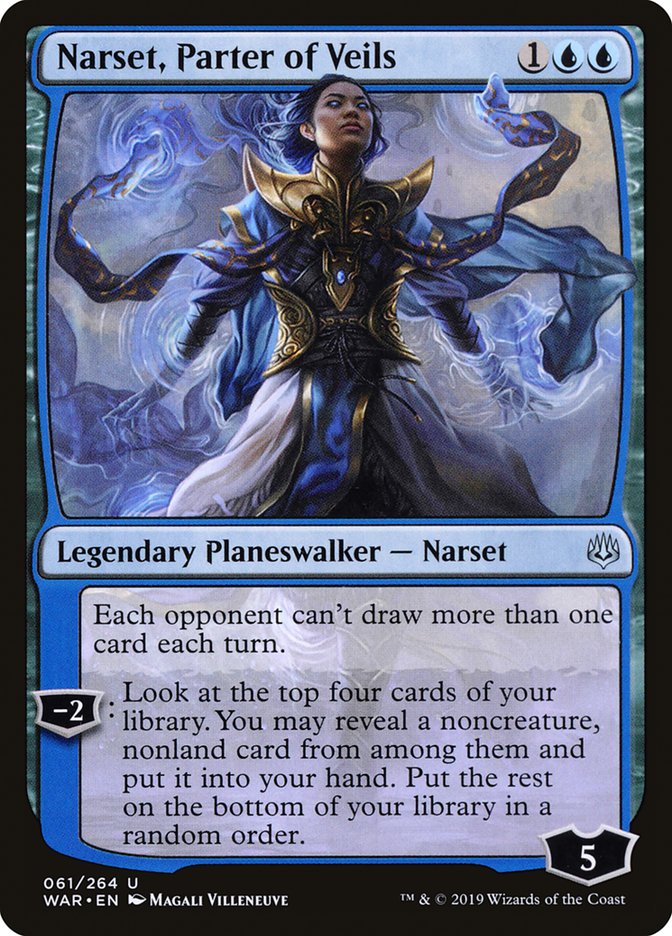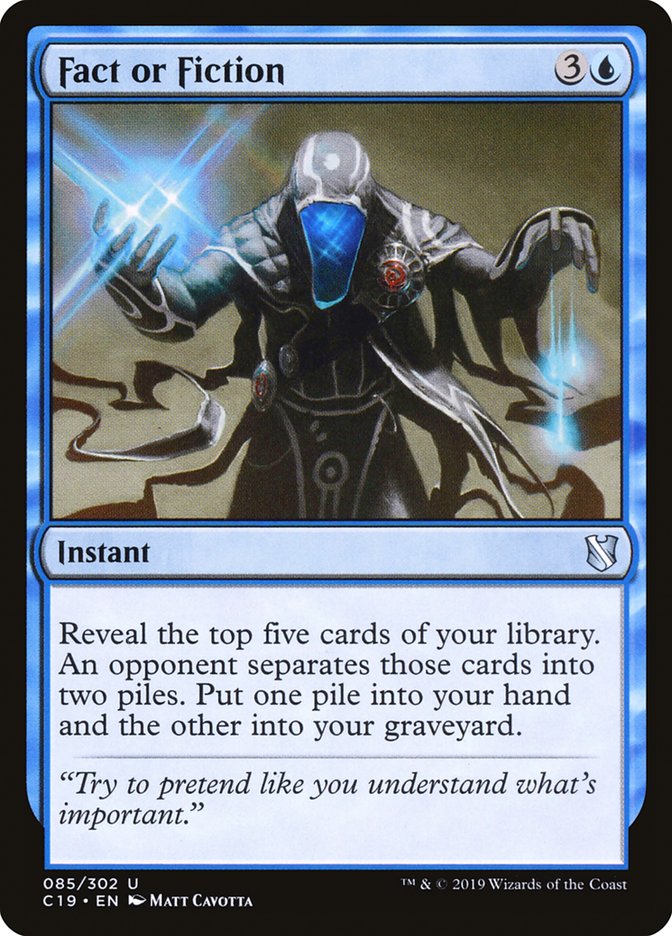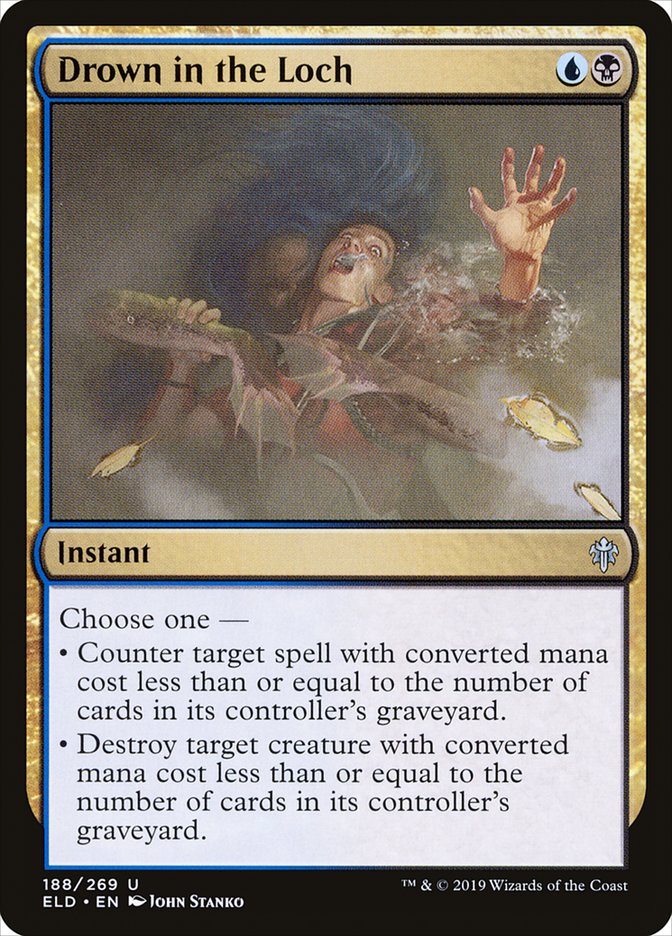When Emry, Lurker of the Loch was previewed, I didn’t think there was any chance we’d see a more powerful card in the set for Modern, so I’m extremely surprised that I currently consider it a distant second. The best isn’t even the completely absurd “look at five cards for no mana” instant; it’s a common land. I understand that everyone gets that Mystic Sanctuary is good, even messed-up, but I still think people don’t understand how good.
Bryan Gottlieb ranked it as the fifth-best card in Throne of Eldraine in his Top 10, which speaks to my point: he sees that it’s good, but doesn’t see it as something that reshapes the format. Patrick Chapin recognizes that the card is “messed-up,” but focuses on the decks that abuse it the most, rather than its ubiquity. If your deck contains Cryptic Command, your manabase should be built such that you can play at least one of these, and that’s just a starting point.
The tip of the iceberg here is “Mystic Sanctuary makes Miracles and Taking Turns better.” I’d say “Your blue interactive deck that can afford to play lands that only tap for blue mana should play at least one of these” is the next step, but I still think that’s just scratching the surface. Like, okay, these decks should play this and it makes them better, but how much better? Will this change the format?
I think it will.
Fine, so if this card is so great and we should include it in all of our decks, should we go out of our way to maximize it or just slot it into our existing decks? I think this card is likely powerful enough to create multiple new archetypes, but it’s always hard to know just how good a new archetype in Modern is, especially one that’s trying to play a long game.
As an example of the breadth of application of this card, I think Paradoxical Urza should definitely be playing one, even if Paradoxical Outcome is the only instant or sorcery in the deck. The possibility of finding it after it’s countered, Thoughtseized, milled by Emry, or just resolved is so strong and the opportunity cost is so small. This is a subtle no-brainer that meaningfully changes the deck’s matchups against something like Jund, which is really counting on using discard to stop you from resolving a Paradoxical Outcome, which is now simply not a viable strategy.
Given that it’s a deck I’ve been playing and would strongly recommend moving forward, and that I think a lot of the lists I’ve seen online are bad, this is the Modern deck I’d recommend at the moment, based heavily on the work and experience of Urchin Colley:
Creatures (9)
Planeswalkers (2)
Lands (18)
Spells (31)

The important notes compared to other builds of this deck:
Grinding Station is much better than using an expensive card to end the game immediately. The only remotely close alternative is Mirrodin Besieged. I’ve been playing both, but I think Mirrodin Besieged is correct to cut with the addition of Emry, and Grinding Station obviously gets better with the addition of Emry and Mystic Sanctuary, as there’s now value in milling yourself. If you haven’t seen Grinding Station in action, you might not process just how much extra mana it ends up giving you in a turn when you’re starting to go off. It’s not just one mana back on every spell you cast; that doubles or triples with Sai and Saheeli, and remember, if all else fails, extra mana is always extra Urza activations, which lead to extra mana.
But it even goes further than that, because Saheeli can copy Grinding Station, doubling the output again, and thanks to Paradoxical Outcome, sometimes you end up making more additional copies of Grinding Station. This one card can turn your deck into a perpetual motion machine the same way Paradox Engine can. It requires more setup, but it also only costs two mana, which means that it’s functional for enabling Mox Opal, Paradoxical Outcome, etc. It’s a very slightly clunky normal card that lets you start going crazy with Urza immediately. Don’t play this deck without it.
People play too many planeswalkers. This deck’s plan is good enough that I just don’t think you should be looking to transform away from your fundamental gameplan. Narset is included specifically as a hate card, particularly for the mirror. In general, I think people aren’t prioritizing keeping spells in both the maindeck and sideboard as cheap as possible enough.
On a related note, I’m pretty high on Sunbeam Spellbomb over Timely Reinforcements, as it doesn’t ask you to go away from your main gameplan and pairs well with Saheeli and Emry.
Finally, I’m not sure on Witching Well versus Serum Visions and how many of that effect is correct once Emry’s added to the deck. I’m very confident that Thoughtcast is wrong.
I agree with Bryan and Patrick that Azorius Control makes great use of Mystic Sanctuary, and I think Counterbalance might actually be worth exploring.
Creatures (2)
Planeswalkers (6)
Lands (25)
Spells (27)

Terminus pairs really well with Mystic Sanctuary, but the trick is getting the first one in your graveyard, which Azorius decks usually aren’t built to do; they haven’t really had a reason to, because it’s not good with Snapcaster Mage. I’ve included Thought Scour, which is typically left out of Azorius Control, because Mystic Sanctuary changes the incentives for cantrips considerably, and it also essentially scries with Counterbalance. Thought Scour is also an important piece of the Counterbalance puzzle in that it helps make sure you have a card in your graveyard with the right cost to fetch to counter a spell when you need to with Counterbalance.
Fact or Fiction is really important in this deck, in that it gives you a high-impact proactive card to return with Mystic Sanctuary. This deck is fundamentally an old deck built to include Mystic Sanctuary, but Fact or Fiction might be the key to an entirely new kind of deck.
Fact or Fiction by itself exists at a fairly unimpressive rate in Modern, but that’s when you’re just casting it once. What if Fact or Fiction is your planeswalker?
Creatures (5)
Lands (24)
Spells (31)

This maindeck operates entirely at instant speed and the sideboard has two sorcery-speed cards. Think about it: if Mystic Sanctuary makes blue better and more people are playing blue, why try to resolve a planeswalker at sorcery speed, exposing yourself to counterspells? Your deck doesn’t need it; planeswalkers are there to give you inevitability, but with Mystic Sanctuary, Fact or Fiction and Cryptic Command are engines. After your resolve one of them, you can find a Mystic Sanctuary with a fetchland and do it again. Running out of Sanctuaries? Pick one up with your Cryptic Command.
This is how I expect control decks to be built in the future, and this is why I think Mystic Sanctuary is the strongest and most impactful card in Throne of Eldraine.
But what if the end-game doesn’t stop at Fact or Fiction? What if Throne of Eldraine gave us an even more powerful option?
Creatures (5)
Lands (23)
Spells (32)

Why draw around three cards when you could draw four cards instead? Into the Story takes some work, but when you’re playing a Modern deck that’s all interaction, almost any opposing graveyard is going to fill up fast. This deck intends to target the opponent frequently with the first Thought Scour, which will also enable Drown in the Loch. Drown in the Loch is the primary reason to play black. Casting costs in Modern are low; getting a split card Counterspell / Terminate is incredible and allows you to play a lot more hard counters than most people can get away with, which, again, offers a big edge in blue mirrors.
While the Jeskai deck is going to convert a lot of its card advantage into damage via Lightning, this deck is just looking to grind the opponent into absolute dust and win by attacking an opponent who’s out of resources with Snapcaster Mage while holding a hand full of counterspells.
The biggest problem with Drown in the Loch is that it doesn’t counter Tron’s end-game early, but between discard and the counterspells in the sideboard, pulse the ability to disrupt Tron with Assassin’s Trophy or a lucky Thought Scour plus Surgical Extraction, I think that matchup is likely not too bad.
I may be falling into the same trap of writing about decks that really maximize Mystic Sanctuary rather than just making the case for adding a singleton into existing blue decks, but the point I’m making is that this card isn’t just an upgrade to the current decks that make the best use of it, this card should lead to an entirely new way to build control decks. With the basic idea of early interaction, Cryptic Command, and the big card draw spell of your choice.
If you want to play Wilderness Reclamation, go ahead. I think it’s overkill, but these decks can certainly take advantage of it. I covered Azorius, Jeskai, and Sultai, but Esper, Temur, whatever you’re into is on the table as long as you make sure your early interaction can cover whatever bases you need to cover.
You can absolutely include more creatures and still take advantage of Mystic Sanctuary, but I’m not really sure what the point is. Why do you need creatures when your late-game is this strong?
Beyond Modern
So if Mystic Sanctuary is this good, and this important in Modern, what about other formats?
I think it’s negligible in Legacy. Azorius should likely play one copy, but that deck tends to use Back to Basics, and in general, playing a card that needs three other Islands on the battlefield in a format defined by Wasteland is a little ambitious.
As for Standard, it’s powerful enough, but you can’t build your deck around it the same way without fetchlands. Yes, you can prioritize Fabled Passage and playing a lot of Islands to make it a good card to draw, but you can’t build your deck in such a way that you expect lands four through seven to all be Mystic Sanctuary.
That said, like Patrick, I’m curious about the idea of a Mono-Blue Mystic Sanctuary deck in Standard, but I wonder about one that’s a little more controlling:
Creatures (12)
Lands (24)
Spells (24)

This deck has a pretty serious Shifting Ceratops problem, and Aether Gust plus Ugin, the Ineffable is the best attempt at a solution I can think of. Four copies of Turn into a Pumpkin probably seems suspect, but I love that card, as it both resets permanents so that you can counter them, picks up your own Gadwick, and offers blue a meaningful amount of incidental lifegain, which is a fairly significant color pie break that seems worth taking advantage of. Playing the mill counters over Sinister Sabotage is a substantial cost, but I think it’s worth it to get to play Into the Story in your Mystic Sanctuary deck, since it’s the most powerful thing you can return.
Anyway, that’s all for this week. If you have a Modern tournament coming up and you want a safe, great deck, play Paradoxical Urza, if you have some time to test and want to try to catch people off-guard with the next big thing, I suggest exploring Mystic Sanctuary Control.


